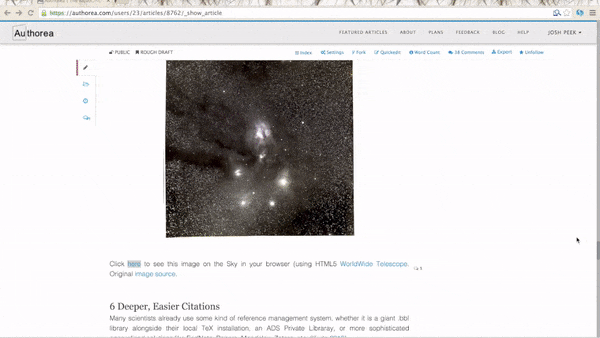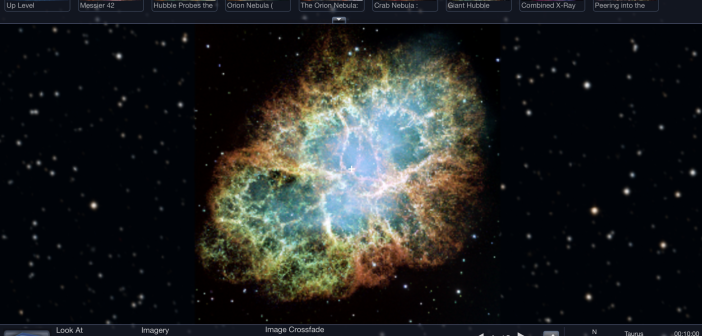During the 227th American Astronomical Society meeting last week in Kissimmee, the AAS announced the exciting news that it will become the new institutional home of Microsoft’s WorldWide Telescope (WWT) astronomy software.
WWT is a scriptable and interactive way of browsing the multiwavelength sky as it is seen from Earth, and the universe as we would travel within it. WWT can be run either as a desktop app or from within an internet browser. And — of interest to researchers especially — it’s an incredibly useful way to visualize and contextualize astronomical data.
What does WWT’s transition to the AAS as its new host mean? WWT was open-sourced by Microsoft Research last year, and hosting by the AAS will permit broad community involvement — in the form of contribution of both code and guidance — in WWT’s further development.
All of this begs the question: why might YOU want to use WWT? That depends on whether your goal is to use it for research, education, or just for fun.
WWT for Research
If you thought WWT was just for education and outreach, think again! Here are just a few things you can do with WWT to advance your astronomical research1:
1) Put surveys into context, on top of more than 40 different all-sky images, spanning the electromagnetic spectrum.
2) Perform literature searches from the sky.
3) Compare images and catalogs at different wavelengths, on-the-fly in seconds.
4) Show your own online data to the world, in an API that allows users to see it on the sky in their browsers.
5) Communicate to colleagues and learners about the sky using interactive tours of your data and ideas.
An example of WWT used to perform astronomy research is the recently highlighted work on the “bones of the Milky Way”, in which the authors used WWT to overlay multiple data sets and visually identify and then search for infrared dark clouds along the predicted positions of Milky Way spiral arms.
An example of WWT used to communicate research is given in this paper, wherein a link in the caption of a figure takes the reader to WWT, where the figure has been placed into context of the sky, allowing the reader to navigate around and within the figure. The reader can even identify individual objects within the image (by right-clicking) and access the objects’ information in astronomical databases like SIMBAD or NED, or find publications about the object on ADS. Try it out for yourself!

This gif shows how a link from a figure caption takes the reader to WWT to see the figure data in context. [https://www.youtube.com/watch?v=3eiUffqU8QI]
WWT for Education
WWT is an incredibly powerful visualization tool that can be used to bring context to lesson topics in K-12 education as well as university classes. It can be used in a lecture setting to talk about an enormous variety of astronomy topics — from Spitzer data sets to phases of the Moon — and in a lab setting to encourage students to explore on their own and ask questions.Sample, pre-made tours for teaching various topics can be found here.
A few sample lesson plans can be found here.
WWT for Fun
Hopefully you’ve already been convinced by the descriptions of WWT’s capabilities that it’s worth checking out. If you don’t have a specific goal in mind, you can visit WWT to simply browse the universe, examining anything from planets to nebulae, from constellations to the CMB, from supernovae to galaxy clusters. If you want a little more guidance, try one of the guided tours available. If you’re feeling adventurous, try to make your own!
The fact that WWT will be developed and guided by the broader community of astronomers will only increase its capabilities. We at the AAS are excited to provide WWT’s new home, and we look forward to watching its evolution.
You can access WWT in your browser here.
You can download the WWT desktop application here (for Windows).
More information on how to use WWT for education and outreach can be found at the WWT Ambassadors webpage.
1Recommendations from Alyssa Goodman


1 Comment
Pingback: Allgemeines Live-Blog ab dem 17. Januar 2016 | Skyweek Zwei Punkt Null